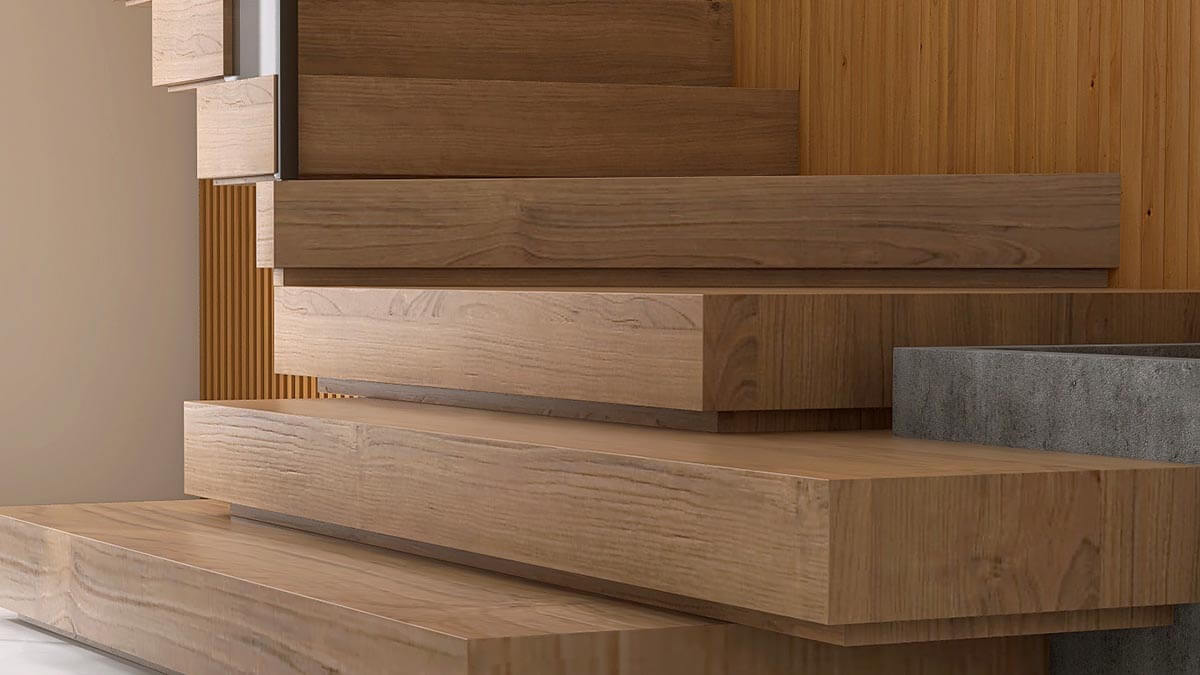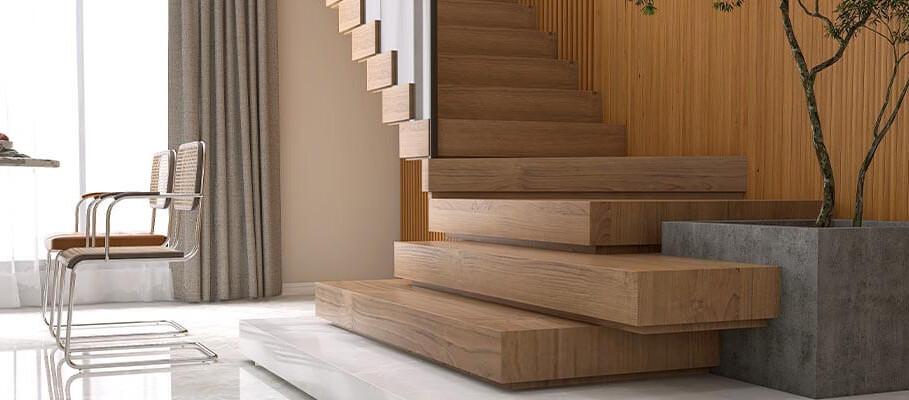Table of Content
- Material Selection: The Foundation of Sustainable Housing
- The Essence of Summer in House Interior Design Ideas
- House Stairs Design: More Than Just a Connection
- Architectural Designer Products and Sustainable Housing
- Elevating Spaces with Architectural Designer Products
- The Long-Term Value Proposition of Architectural Designer Products
- Customization and Collaboration in Residential Design
- Pro Tip
- Conclusion
1. Material Selection: The Foundation of Sustainable Housing
The materials used in a home affect both its look and its impact on the environment. Architectural designer products offer many stylish and eco-friendly options to meet the needs of even the most selective homeowners. This is the starting point for any project, setting the tone and defining the parameters for subsequent design choices.
Here are some key sustainable material options:
Flooring
- Bamboo: A popular sustainable alternative to traditional hardwood, bamboo is a rapidly renewable resource known for its durability, ease of maintenance, and variety of styles and finishes.
- Reclaimed Wood: Salvaged from old buildings or structures, reclaimed wood adds unique character and history to a home while promoting reuse and reducing deforestation.
Countertops
- Recycled Glass: Made from post-consumer or post-industrial glass, recycled glass countertops offer striking visual appeal with a wide range of colors and patterns.
- Quartz: Engineered from natural quartz crystals and resins, quartz countertops are highly durable, non-porous, and resistant to stains and scratches.
- Concrete: This option is becoming more and more popular, due to the material's durability.
Exterior Cladding
- Fiber Cement Siding: A composite of cement, sand, and cellulose fibers, fiber cement siding offers durability, fire resistance, and various aesthetic options. It is also resistant to rot, insects, and extreme weather conditions.
One potential challenge in material selection is ensuring that the chosen materials are sourced responsibly. Architects and designers should look for certifications like FSC (Forest Stewardship Council) for wood products and Cradle to Cradle for other materials. These certifications provide assurance that the materials have been harvested or manufactured in an environmentally and socially responsible manner.
2. The Essence of Summer in House Interior Design Ideas
Summer house interior design ideas aren’t just about looks—they’re about crafting a peaceful retreat that feels comfortable, open, and connected to nature.
For architects and designers, this means designing spaces that bring in plenty of natural light, encourage airflow, and blend indoor and outdoor areas seamlessly. But how can this balance be achieved?
One important element is using large windows and glass doors. These let in natural sunlight and offer beautiful views of the surroundings. Light, breathable fabrics like linen and cotton in soft, natural tones add to the airy feel. Adding materials like wood, stone, and rattan helps strengthen the home’s connection to nature.
However, too much glass can lead to overheating, especially in hot climates. To prevent this, architects can include features like overhangs, awnings, or strategically placed deciduous trees that provide shade during the warmest months.
3. House Stairs Design: More Than Just a Connection
House stairs design has evolved from being just a way to move between floors to a key design feature that shapes a home’s overall look.
A well-designed staircase can become a striking focal point, adding either bold elegance or subtle charm. The materials used play a big role in achieving the right style.
For a Modern, Minimalist Look:
- Glass: Offers clean lines and a sense of lightness and transparency.
- Steel: Provides a sleek, industrial aesthetic and structural strength.
- Concrete: Creates a contemporary, monolithic look with versatility in form and finish.
For a Warm, Traditional Feel:
- Hardwood: A classic choice that brings warmth, natural beauty, and a sense of craftsmanship.
For a Striking Visual Impact:
- Floating Staircases: Where treads appear to hover without visible support, creating a dramatic and airy feel. This design can be achieved with various materials, including those listed above, through innovative engineering and hidden support systems.
Safety is always a top priority. Building codes set rules for railing heights, step dimensions, and other features, but there’s still plenty of room for creativity. Designers can experiment with unique railings, smart lighting, or even storage solutions beneath the stairs.
A common challenge in house stairs design is finding the right balance between style and practicality, especially in smaller homes. A large, sweeping staircase might look impressive but take up too much space. In such cases, a spiral or switchback staircase can be a more space-saving option for residential design.

4. Architectural Designer Products and Sustainable Housing
Sustainable housing is no longer a niche concept; it's becoming a mainstream expectation. Homeowners are increasingly aware of the environmental impact of their choices, and they seek homes that are not only beautiful but also resource-efficient and environmentally responsible. Architectural designer products play a pivotal role in achieving this goal.
High-performance windows with advanced glazing technologies, for example, can significantly reduce energy consumption by minimizing heat loss in winter and heat gain in summer. Sustainable materials like bamboo flooring, reclaimed wood, and recycled metal roofing offer both aesthetic appeal and a reduced environmental footprint.
Energy-efficient lighting fixtures, water-saving plumbing fixtures, and smart home automation systems further contribute to sustainable housing. These products not only reduce a home's environmental impact but also result in lower operating costs for the homeowner, enhancing the long-term value of the property.
One potential challenge in adopting sustainable practices is the perceived higher upfront cost of some architectural designer products. However, it's crucial for B2B professionals to emphasize the long-term cost savings and environmental benefits to their clients. Life-cycle cost analysis can be a valuable tool in demonstrating the return on investment for sustainable products.
5. Elevating Spaces with Architectural Designer Products
Using architectural designer products is key to creating a home that looks and feels well put together. This means thinking about how different features—like windows, flooring, lighting, and fixtures—fit together to create a stylish and functional space.
Take windows, for example. Their placement and design can make a big difference in how much natural light and fresh air a room gets. Large windows in the right spots can make a space feel more open and connected to the outdoors while also cutting down on the need for artificial lighting. The style of window frames and glass can change the overall look of a home, whether you want something sleek and modern or warm and classic.
Lighting is another important element. Architectural designer products in lighting range from simple, built-in LED fixtures that provide soft, even lighting to eye-catching pendant lights that act as decorative highlights. Smart lighting systems let homeowners adjust brightness and mood while saving energy.
Even small details, like fixtures (faucets, showerheads, and door handles), play a big role in a home’s design. Choosing high-quality, well-designed fixtures not only adds durability but also ensures a consistent style throughout the space.
One challenge in designing a home is making sure all the different elements work well together. For example, smart home features should connect smoothly with lighting, heating, and security systems.
That’s why architects, designers, and suppliers need to collaborate closely. If you're thinking about offering these design ideas for homes—whether it's for a summer house interior design, house stairs design, or even sustainable housing—reach out to our team for a consultation: https://supplier.europages.com/en/rfc.

6. The Long-Term Value Proposition of Architectural Designer Products
Investing in architectural designer products may cost more upfront than standard options, but it pays off in the long run for both homeowners and B2B professionals. These products are built to higher standards, making them more durable, efficient, and low-maintenance over time.
For homeowners, this means lower energy bills, greater comfort, and a higher resale value. A home designed with high-quality materials and smart residential design choices is not only more appealing to buyers but can also sell for a higher price.
For B2B professionals, using architectural designer products can help build a strong reputation and attract clients who appreciate quality and sustainable housing. Working with top manufacturers and suppliers also gives access to the latest design trends and innovations.
Plus, because these products are more durable, builders and contractors deal with fewer warranty claims and repairs, saving time and money. A well-executed project featuring premium materials can serve as a great portfolio piece, showcasing expertise and attracting new business.
Organizations like BREEAM (Building Research Establishment Environmental Assessment Method) offer resources and certifications that help professionals highlight their commitment to sustainable building. Their programs support eco-friendly construction, making it easier to promote energy-efficient homes. If you want to learn more about the certification process, feel free to visit their website: BREEAM | Sustainable Building Certification.
One challenge is convincing clients who focus on upfront costs rather than long-term benefits. B2B professionals can address this by providing clear cost-benefit comparisons, real-world success stories, and highlighting the increased resale value of homes built with high-quality materials.
7. Customization and Collaboration in Residential Design
One of the biggest benefits of using architectural designer products is the ability to customize them to fit each client’s unique needs and style. Many manufacturers offer bespoke options, allowing architects and designers to create one-of-a-kind spaces.
Customization isn’t just about looks—it also improves performance. For example, windows can be designed for specific climates, with special glass to control heat, block UV rays, and improve insulation. Flooring can be tailored in terms of material, finish, and pattern to match the overall residential design vision.
Successful customization requires teamwork between architects, designers, suppliers, and manufacturers. This ensures that the chosen products not only look great and function well but also meet building codes, safety standards, and sustainability goals.
One challenge with customized products is that they often take longer to produce and deliver. Proper planning and coordination are key to keeping the project on schedule and within budget. If you're looking for suppliers to provide a specific quote, feel free to request one now: https://www.europages.fr/en/rfq.
For more information about housing, you can read the insightful articles:
- Wood's Comeback in Modern Architecture
- Domotics Home Automation
- Heat Pumps: Technology of the Future? | Europages
- The Modern Metal Construction
- Smart Control Systems for Air Conditioning | Europages
- Reimagining the Future with Sustainable Paper Furniture

8. Pro Tip
B2B professionals can make the most of architectural designer products by building a curated library of preferred suppliers and products. This resource helps streamline selection, maintain quality and design consistency, and strengthen supplier relationships.
A well-organized library can also lead to better pricing, exclusive deals, and early access to new innovations. Beyond saving time, this approach positions your firm as an expert in sourcing high-quality, sustainable solutions for residential design, adding more value for your clients.
9. Conclusion
Using architectural designer products wisely is important to creating outstanding residential design that keeps up with homeowners' changing needs. Focusing on sustainability, quality, and innovation helps B2B professionals improve their projects, build a strong reputation, and offer lasting value to clients.
Trends like summer house interior design ideas and house stairs design show how both style and function matter in modern homes. With more people looking for sustainable housing, these principles will be essential for staying competitive in architecture and design.
Beyond the current focus on sustainability, what role will smart home integration play in shaping the selection of architectural designer products, and will we see a rise in demand for products that not only look good and are eco-friendly, but also seamlessly connect and communicate with each other within the home?
Find residential design solutions for your project!
MAFF Group: A leading provider of architectural solutions since 2004, empowers architects and builders to create exceptional and sustainable residential spaces. High-quality, bespoke façade solutions, custom design consulting, and innovative material selection are offered, enabling the development of homes that are both aesthetically stunning and environmentally responsible.
SCAW: Delivers innovative and client-focused design solutions. The studio provides comprehensive, turnkey project management for residential and commercial properties, transforming spaces into unique reflections of individual lifestyles and aesthetic preferences.
İLK İHRACAT AŞ: Specializes in joint export activities within the Turkish metal industry. The company provides access to a comprehensive range of metal materials, processing services, and finished products.
Grupcam: Focuses on glass processing, with a particular emphasis on Insulating Glass Units (IGUs) for architectural facades and residential applications. Operating from an 8,000-square-meter facility and leveraging advanced technology, the company provides glass solutions to both domestic and international markets.
Graf Bauzentrum: Is a multifaceted company centered around a modernized sawmill and offering a wide range of wood products, building materials, and home improvement solutions. Its core is a powerful, CNC-controlled planer circular saw system capable of processing wood in all dimensions.
CLICK ONE: Provides 3D scanning and digital solutions for architecture, space planning, and project management. The company leverages advanced technologies to deliver immersive 3D tours, accurate BIM files, detailed geometric measurements, and drone surveying services.
Design Manufaktur GmbH: Is a provider of exclusive and customized interior design services. With over 20 years of experience, the company's creative team designs stylish and functional spaces for residential and commercial clients. Services encompass the entire project lifecycle, from initial planning to turnkey implementation.
Shaun Renovation: Is a specialist in high-end renovation services in La Baule and the surrounding area. The company focuses on transforming spaces with a combination of traditional craftsmanship and contemporary innovations.
Ambient: Has established itself as a key supplier of pipe fittings, decorative elements, and structural components. The company caters to a variety of project needs through its online platforms and partnerships with leading brands.
ihrholzstueck.de: Offers comprehensive services for custom furniture and interior design, managing every stage from initial project planning and design to production and final assembly. Whether for new builds or renovations, the team at ihrholzstueck.de provides a complete solution, including coordinating with other trades like plumbers and electricians when necessary.
TIXIT: Offers a comprehensive range of storage and operational equipment, alongside machinery and tools for various industries. The company provides in-house manufacturing at its Villingen-Schwenningen location and a full suite of services, from consulting and planning to manufacturing and assembly.
LapisMundi: Is a supplier of natural stone, specializing in comprehensive projects that utilize marble, quartzite, and onyx. With a global perspective and a commitment to craftsmanship, the company offers customized solutions designed to exceed client expectations.

